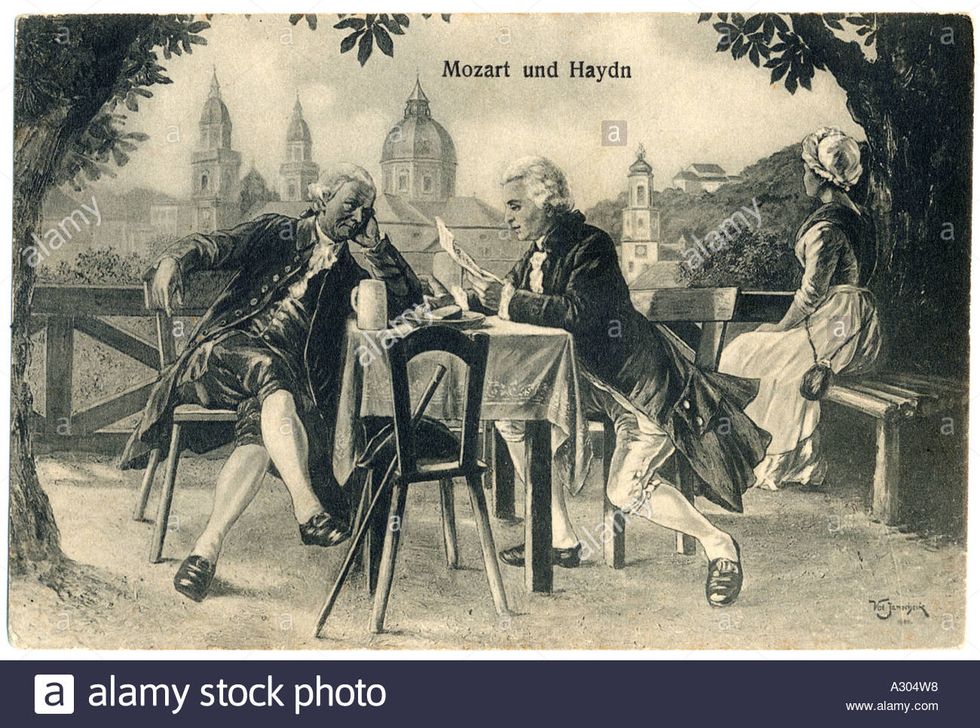Haydn (1732-1809) and Mozart (1756-1791) were known to get along, although Haydn was older than Mozart and lived a longer life whereas Mozart died at the age of 35. Mozart was known as the most influential composer of the Classical era and though Haydn was famous in his time as well, he still lived in the shadows of Mozart. They were constantly compared to each other from their personal lives to their compositional similarities. By the time Haydn became a revered composer, Mozart has just come into the scene as a child prodigy.
Mozart was five-years-old when he began composing and traveled all over Europe with his father, Leopold Mozart, and his sister performing concerts for royalty. With Mozart traveling as often as he did he picked up a variety of musical styles that are later incorporated in his later works. Mozart was also known for using more thematic ideas. For example, in Don Giovanni, he gives us the themes such as good vs. evil within his compositions to compliment what is happening in the opera. Such as when Don Giovanni was fighting against the Commandatore, he gives the impression of swords clashing with rapid scale patterns through the section.
Mozart also used more chromatic scales to enforce his thematic ideas and his melodies tend to be more lyrical with Italian style influencing both the melody and accompaniment. Haydn barely traveled outside of Vienna until he traveled to London at the age 60. It was there that he took even bigger risks with the the London symphonies he composed for. As he composed and conducted more for the London audience the more he gained his popularity. In the forty years he has composed, he was able to apply experimental musical techniques with non-traditional forms.
In Symphony No. 45 in f# minor, “Farewell,” movement 3 Minuet-Allegretto is written in F# major and just when you think the first chord of the piece is going to be a F# major chord, Haydn uses his surprisingly witty non-traditional style by using a D Major chord instead. He didn’t want to leave the audience wondering why a Minuet is in F# major he instead added a D Major chord and had the dynamic marking at forte. That was unheard of at the time Haydn did it. He was a self-taught patient person who was precise and practical with his life and yet his pieces always gave me the impression of “what’s going to happen next?”
Mozart and Haydn had that in common. The audience always wondered what they were going to do next because they made sure to give something different from any other composer known at that time. They both made an impact in their symphonies, operas, string quartets, etc. both during their period and even now after their deaths.
















